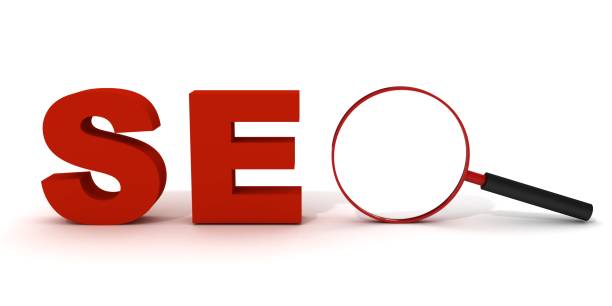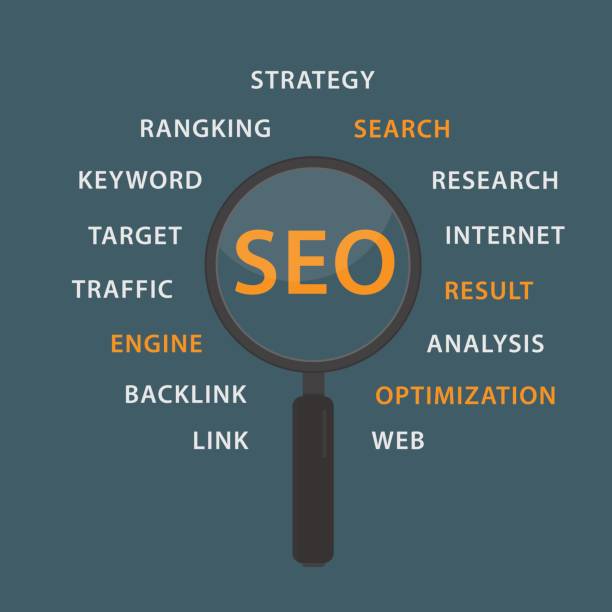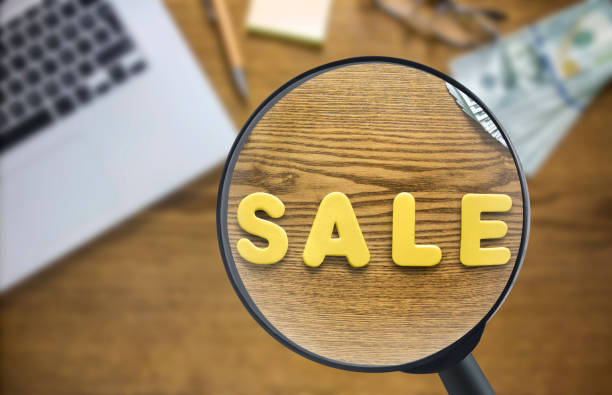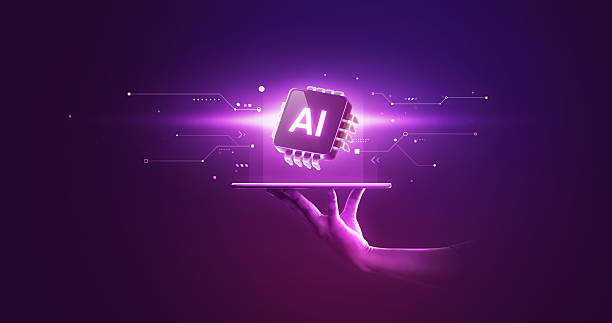What is On-Page SEO? Why is it important?

On-Page SEO refers to a set of actions we take within our website to improve its ranking in search engines.
These actions include optimizing content, site structure, HTML tags, and other factors related to the internal aspects of the site.
On-Page SEO is of paramount importance because it helps search engines better understand your site’s content and recognize its relevance to users’ target keywords.
In other words, On-Page SEO helps your site rank higher in search results for users’ desired #keywords.
More information about SEO.
Why is On-Page SEO important? Firstly, Google and other search engines value high-quality and relevant content.
By optimizing your content, you show search engines that your site contains valuable information for users.
Secondly, On-Page SEO helps improve user experience.
A site with a proper structure and readable content keeps users on the site longer and increases their likelihood of returning.
On-Page SEO acts as a complement to Off-Page SEO, and both are crucial for success in search results.
Ultimately, a strong On-Page SEO strategy helps you attract more organic traffic to your site, which can lead to increased sales and revenue.
Remember, On-Page SEO is an ongoing process and requires continuous updates and improvements.
Are you concerned about your e-commerce site’s low conversion rate and not achieving your desired sales?
RasaWeb is your specialized solution for having a successful e-commerce site.
✅ Significant increase in conversion rate and sales
✅ Professional and user-friendly design to attract customer satisfaction
⚡ Ready for a transformation in online sales? Get a free consultation!
Keyword Research – The Foundation of On-Page SEO

Keyword research is the cornerstone of any successful On-Page SEO strategy.
Before anything else, you need to know what words users are using to find your products or services.
Various tools are available for keyword research, such as Google Keyword Planner, Ahrefs, SEMrush, and Moz Keyword Explorer.
These tools help you identify relevant keywords, their search volume, and their competition level.
Ahrefs Keyword Explorer is a powerful tool for this purpose.
When conducting keyword research, look for long-tail keywords.
These keywords usually have lower search volume but higher conversion rates because they more precisely answer users’ needs.
For example, instead of the keyword “sports shoes”, use the keyword “buy men’s running sports shoes”.
After identifying suitable keywords, incorporate them naturally into your content.
Avoid overusing keywords, as this can lead to your site being penalized by search engines.
Additionally, use keywords in title tags, meta descriptions, heading tags (H1-H6), and image alt text.
The main goal is to show search engines that your content is relevant to users’ target keywords and is worth ranking.
Content Optimization – The Beating Heart of On-Page SEO

High-quality and relevant content is the beating heart of On-Page SEO.
Search engines look for content that answers users’ questions, solves their problems, and provides valuable information.
To optimize content, you must first know your target audience and understand their needs.
Then, create content that fully addresses these needs.
Use the keywords you identified in the keyword research phase naturally in your content.
Divide your content into smaller sections and use heading tags (H1-H6) to organize it.
This makes your content more readable and understandable for search engines.
Use images and videos to make your content more engaging.
Ensure your images are optimized and have alt text.
Videos should also have appropriate titles and descriptions.
Regularly update your content and add new information to it.
This shows search engines that your site is active and dynamic.
Try to create shareable content.
This helps you attract more traffic to your site.
By producing engaging and useful content, you can succeed in On-Page SEO rankings.
Also, don’t forget that internal linking is an important part of content optimization.
Linking to relevant pages on your site helps search engines better understand your site’s structure and improve your pages’ rankings.
| SEO Element | Description |
|---|---|
| Page Title | Must include the main keyword and be engaging. |
| Meta Description | Provides a brief explanation of the page’s content. |
| Header Tags (H1-H6) | Used for structuring content and highlighting keywords. |
Optimizing Title Tags and Meta Descriptions

Title tags and meta descriptions are the first things users see in search results.
Optimizing these tags is crucial for attracting users and increasing click-through rates (CTR).
The title tag should include the main keyword of the page and be engaging and persuasive.
The length of the title tag should not exceed 60 characters, as Google usually truncates longer title tags.
Meta descriptions should also provide a brief explanation of the page’s content and encourage users to click.
The length of meta descriptions should not exceed 160 characters.
More information about title tags.
Try to also use secondary and relevant keywords in your title tags and meta descriptions.
Avoid creating duplicate title tags and meta descriptions, as this can harm your site’s ranking.
Each page of your site should have a unique title tag and meta description.
Using emojis in title tags and meta descriptions can help attract users’ attention, but do not overuse them.
By optimizing your title tags and meta descriptions, you can improve your site’s On-Page SEO and attract more traffic to your site.
These two elements are among the most important factors in search results and play a significant role in attracting users.
Are you tired of losing business opportunities due to not having a professional corporate website?
RasaWeb helps you with professional corporate website design:
✅ Build a powerful and reliable image for your brand
✅ Convert website visitors into loyal customers
⚡ Get a free consultation now!
URL Optimization – Creating SEO-Friendly Website Addresses

Website addresses (URLs) also play an important role in On-Page SEO.
An SEO-friendly URL should be short, descriptive, and include the main keyword of the page.
Avoid using uppercase letters, spaces, and special characters in your URLs.
Use hyphens (-) instead of spaces.
Try to keep your URLs as simple and understandable as possible.
A good URL helps search engines better understand the page’s content and improve your site’s ranking.
For example, instead of the URL “example.com/page?id=123”, use “example.com/seo-internal”.
Design your site’s URL structure logically and hierarchically.
This helps users and search engines navigate your site easily.
Avoid creating duplicate URLs.
Each page of your site should have a unique URL.
By optimizing your URLs, you can improve your site’s On-Page SEO and enhance user experience.
Also, remember that changing existing page URLs can harm your site’s ranking, so before doing so, be sure to use a 301 redirect to guide users and search engines to the new URL.
This prevents 404 errors and helps maintain your site’s ranking.
Optimized URLs play a key role in On-Page SEO.
Image Optimization – Increasing Speed and Improving Rank

Images play a significant role in website content appeal and interaction, but if not properly optimized, they can slow down site loading speed and harm site ranking.
To optimize images, you must first use the appropriate format.
JPEG and PNG formats are generally suitable for web images.
JPEG is better for images with many colors, and PNG is more suitable for graphics and text.
Reduce the size of your images as much as possible.
Use image compression tools like TinyPNG and ImageOptim.
TinyPNG is a free and efficient tool for reducing the size of PNG and JPEG images.
Choose descriptive file names for your images and use relevant keywords.
Use alt text for your images.
Alt text should provide a brief description of the image’s content and include relevant keywords.
Alt text helps search engines understand the image’s content and improve your site’s ranking.
Avoid using large, high-quality images, as these can slow down site loading speed.
Use lazy loading for images.
This technique ensures that images are loaded only when they are visible on the user’s screen.
By optimizing your images, you can increase site loading speed, improve user experience, and enhance your site’s On-Page SEO.
Finally, ensure your images are responsive and displayed correctly on various devices.
Website Speed Optimization – A Crucial Factor in On-Page SEO

Website loading speed is one of the most important factors in On-Page SEO.
Users expect web pages to load within a few seconds.
If your site is slow, users will quickly leave it, and this can harm your site’s ranking.
Google also considers site loading speed as one of its ranking factors.
To optimize site speed, you must first test your site’s speed.
Use various tools such as Google PageSpeed Insights, GTmetrix, and WebPageTest.
These tools help you identify your site’s speed issues and find solutions for improvement.
Use high-quality hosting.
Poor hosting can severely reduce your site’s speed.
Use a CDN (Content Delivery Network) to distribute your site’s content.
A CDN allows users to receive your site’s content from the nearest server, which can significantly increase site loading speed.
Compress your CSS and JavaScript files.
Use caching to store static versions of your site’s pages.
Optimize your images (refer to the previous section).
Optimize your site’s code and avoid unnecessary and redundant code.
By optimizing your site’s speed, you can improve user experience, reduce bounce rate, and enhance your site’s On-Page SEO.
A fast site significantly impacts On-Page SEO ranking.
| Website Speed Factors | Description |
|---|---|
| Server Response Time | The faster, the better |
| Page Size | Smaller size, faster loading |
| HTTP Requests | Reduce the number of requests |
Internal Linking – Creating a Strong Website Structure

Internal linking refers to the process of linking from one page of your site to another.
Internal linking plays an important role in On-Page SEO.
Internal linking helps search engines better understand your site’s structure and improve your pages’ rankings.
Additionally, internal linking helps users navigate your site easily and discover more content.
When linking to other pages, use descriptive and relevant anchor text.
The anchor text should include the main keyword of the destination page.
For example, if you want to link to the “What is On-Page SEO” page, use the anchor text “On-Page SEO“.
Regularly link new pages to older pages.
This helps search engines find new pages faster and improve their rankings.
Avoid creating too many unnecessary links.
Only link to pages that are relevant to the current page’s content.
By creating a strong internal linking structure, you can improve your site’s On-Page SEO and enhance user experience.
Internal linking is considered one of the most important actions in On-Page SEO.
Is your current e-commerce website design not generating the sales you expect?
RasaWeb is an expert in professional e-commerce website design!
✅ An attractive and user-friendly site aimed at increasing sales
✅ High speed and security for an ideal shopping experience⚡ Get a free online store design consultation with RasaWeb!
Mobile Optimization – Compatibility with Mobile Devices

Today, more than half of web traffic comes from mobile devices.
For this reason, mobile optimization is of paramount importance.
Google also ranks sites that are optimized for mobile higher in search results.
To optimize your site for mobile, you must first use responsive design.
Responsive design means that your site automatically adapts to the screen size of different devices.
Use readable fonts and appropriate button sizes.
Optimize your site’s menu for mobile.
Use optimized images and videos for mobile.
Optimize your site’s loading speed for mobile.
Test that your site is displayed correctly on various devices.
By optimizing your site for mobile, you can improve user experience, reduce bounce rate, and enhance your site’s On-Page SEO.
Google has provided tools to check site compatibility with mobile.
Be sure to use these tools and resolve any potential issues.
Ensure your site is mobile-friendly; this is a key factor in modern On-Page SEO.
Note that On-Page SEO is useless without mobile optimization.
Review and Analysis – Continuous Monitoring of On-Page SEO

On-Page SEO is an ongoing process and requires continuous review and analysis.
You should regularly monitor your site’s performance in search engines and identify its strengths and weaknesses.
Use various tools such as Google Analytics and Google Search Console.
Google Analytics helps you analyze your site’s traffic, understand user behavior on your site, and measure conversion rates.
Google Search Console helps you monitor your site’s performance in search results, identify your site’s errors, and submit your sitemap to Google.
Google Analytics is an essential tool for every webmaster.
Regularly check your keywords and track their rankings in search results.
Follow changes in search engine algorithms and update your On-Page SEO strategy accordingly.
Through continuous review and analysis, you can improve your site’s On-Page SEO and increase your site’s ranking in search engines.
Remember that On-Page SEO is a marathon, not a sprint.
Patience and perseverance are the keys to success in this field.
By implementing continuous changes and thoroughly analyzing data, you can constantly improve your site’s ranking.
On-Page SEO is an ongoing process.
Frequently Asked Questions
| Question | Answer |
|---|---|
| What is On-Page SEO? | It refers to the set of actions performed within a website to improve its ranking in search engines. |
| Why is On-Page SEO important? | Because it helps search engines better understand your site’s content and structure, and it improves user experience. |
| What are the most important elements of On-Page SEO? | Title and meta descriptions, keywords, URL structure, quality content, image optimization, internal linking, and site speed. |
| How to optimize title tags and meta descriptions? | The title should include the main keyword and be engaging, and the meta description should be a persuasive summary of the content with relevant keywords. |
| What is the role of keywords in On-Page SEO? | Keywords inform search engines what the page’s content is about and should be used naturally and intelligently within the text. |
| How is image optimization done for On-Page SEO? | By compressing size, using descriptive file names, and filling the Alt tag with relevant descriptions and keywords. |
| What is Internal Linking and what is its purpose? | It is connecting different pages of the site to each other. This helps in distributing Page Authority and improving search engine crawling. |
| What is the importance of site loading speed in On-Page SEO? | High speed improves user experience and is one of the important ranking factors for search engines like Google. |
| What impact does site responsiveness (Mobile-Friendliness) have on On-Page SEO? | Given the increase in mobile users, responsiveness is essential for providing a suitable user experience on all devices and for Google’s mobile-first indexing priority. |
| What are the important content-related factors in On-Page SEO? | Originality, quality, comprehensiveness, readability, appropriate use of headings (H1, H2,…), and regular content updates. |
And other services of RasaWeb Advertising Agency in the field of advertising
Smart Advertising Campaign: Transform click-through rates with precise audience targeting.
Smart Brand Identity: A combination of creativity and technology to increase click-through rates through user experience customization.
Smart Marketplace: An effective tool for improving SEO ranking with the help of Google Ads management.
Smart Content Strategy: A dedicated service for growth in sales based on intelligent data analysis.
Smart Google Ads: Transform campaign management with an SEO-driven content strategy.
And over hundreds of other services in the field of internet advertising, advertising consultation, and organizational solutions
Internet Advertising | Advertising Strategy | Advertorials
Resources
What is On-Page SEO?
What is On-Page SEO?
On-Page SEO Tutorial
Comprehensive Guide to On-Page SEO
? With “RasaWeb Afarin”, your business takes flight in the digital world! From fast website design and innovative solutions to comprehensive online marketing strategies, we are your partner in digital success.
📍 Tehran, Mirdamad Street, next to Bank Markazi, Southern Kazeroon Alley, Ramin Alley, No. 6



